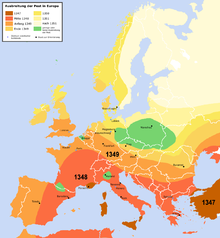 Memento Mori, the third of my Lady Apollonia West Country Mysteries, begins with a journey by Laston, the squire of Lady Apollonia’s fourth son, Sir Alban. Laston has returned to England bringing with him the heart of Alban who died of the plague while fighting with the Teutonic Knights against the Slavs. Laston must continue his search for the Lady Apollonia because in Aust he learns that she is not there but is currently living in Gloucester. The young squire wants to tell her what has happened to her son and to bring her the only part of Alban’s remains that he could return from the continent.
Memento Mori, the third of my Lady Apollonia West Country Mysteries, begins with a journey by Laston, the squire of Lady Apollonia’s fourth son, Sir Alban. Laston has returned to England bringing with him the heart of Alban who died of the plague while fighting with the Teutonic Knights against the Slavs. Laston must continue his search for the Lady Apollonia because in Aust he learns that she is not there but is currently living in Gloucester. The young squire wants to tell her what has happened to her son and to bring her the only part of Alban’s remains that he could return from the continent.
The most common form of the plague is the bubonic plague. This disease apparently came out of Asia and swept across Europe in several waves in the 14th century beginning in 1347 as shown in the map. It killed an estimated 50 million people in Asia, Europe, and Africa. Death often resulted in just a matter of days or even hours. Although Alban died on the continent, England was not exempt from the pandemic which wiped out a third to a half of its population. It is also possible that bubonic plague in the 14th century was supplemented by some other form of infection which caused death even more quickly than bubonic plague.
It took most of Europe until the 18th century just to return to former levels of population and caused great economic consequences. Common labourers became more valuable because of the shortage created by the pandemic. The plague pandemic was so important to life in 14th century England that I could not ignore a description of it in my series of mystery stories.
The plague was not well understood in medieval times. The pandemic later came to be called the Black Death. Sometimes victims developed gangrene, leading to skin dying and becoming black. The disease seemed to hit towns and cities a little harder than rural areas, especially those furthest from trade routes. Many victims exhibited buboes which were swollen lymph nodes in the armpits or groin. There were varied theories, mostly wrong, about how the disease was transmitted and how it should be treated.
We now know that the disease is caused by Versinus Pestis, a bacterium carried by fleas often found on small animals such as rats. There are medications today which can reduce the death rate to 10% of the population.
For more information on the plague, click on
https://en.wikipedia.org/wiki/Bubonic_plague or on
https://en.wikipedia.org/wiki/Black_Death
Tags: Chaucer's England, historical fiction, medieval mysteries